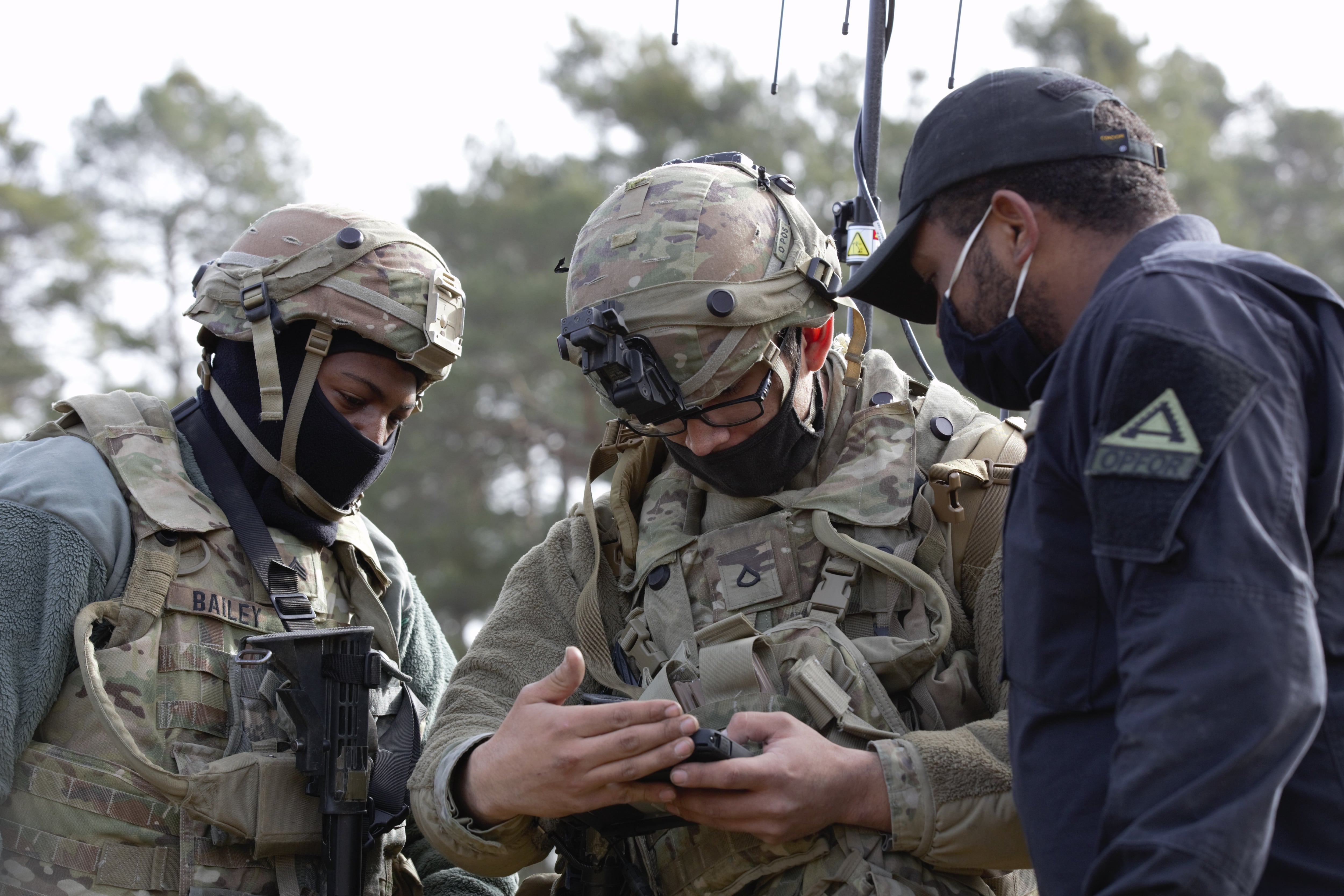Soldiers out of Hawaii are building a new, agile type of unit that could be the future when it comes to how the Army fields ground combat forces in far-flung West Pacific battlefields.
A “light brigade combat team” made up of soldiers from 3rd Infantry Brigade Combat Team, 25th Infantry Division recently completed a six-month rotation as part of the service’s Operation Pathways program that pairs Army units with partner forces in the region for training in the host nation.
Maj. Gen. Marcus Evans, 25th ID commander, told reporters Friday that the brigade trained, tested and used various new technologies and equipment for the first time during the tour.
Soldiers worked alongside Philippine counterparts with the 7th Infantry Division out of Fort Magsaysay, Philippines.
Evans and division Command Sgt. Maj. Shaun Curry both said some of the immediately noticeable changes came in how quickly they could maneuver large groups of soldiers and detect threats at even the lowest unit level.
RELATED

Squad leaders had their own small drones to recon their area as far as three to five kilometers ahead. Traditionally, they would have had to rely on drones at higher-level units such as the company or battalion, all competing with demands from other squads or platoons.
That allows units to rely less on the limited number of trained forward observers needed to call in fire or direct aircraft to strike a target.
But at the same time, those drone operators require some extra considerations, according to Evans.
“Before you bring in a helicopter to a landing zone, you now have to make sure that that airspace has been cleared from the small unmanned aerial systems that maybe have been performing a reconnaissance task,” Evans said.
Platoons also had electromagnetic detection equipment to see otherwise hidden enemy communications signatures that might have gone unnoticed, such as those emitted from adversary drones.
“It is very challenging in today’s environment to hide, and so, the sooner you can identify the threat that is intended to come at you and your formations, the better able you are to position yourself to mitigate that threat,” Evans said.
Less hi-tech but just as valuable were new devices such as the Silent Tactical Energy Enhanced Dismount, or STEED.
STEED is a casualty-carrying device that works as a kind of a combination wheelbarrow/stretcher, powered with an electric motor, allowing a single soldier to transport up to three casualties or 500 pounds, rather than using an entire squad of nine or more soldiers out of the fight to move casualties.
But soldiers saw more potential for the STEED than simply carrying wounded.
The same device was used to transport a company’s worth of communication equipment, while others were used to haul cumbersome 60mm and 81mm mortar systems, easing the burden on soldiers and speeding up their movement, Curry said.
Other speed-related initiatives include experimentation back in Hawaii with newly issued Infantry Squad Vehicles, or ISVs which showed brigade and battalion planners how they could attack at comparatively lightning speed when compared with traditional foot movement, helicopters or larger trucks, Evans said.
Evans said that, with the full complement of the squad vehicles, commanders could move a company or battalion over a 300-kilometer distance without support from larger units and disperse that company or battalion across the battlespace, making it harder for an adversary to detect or defeat.
Though the 3rd Brigade did not take ISVs to the Philippines, its fellow 25th Division unit, the 2nd brigade, plans to use them at an upcoming October rotation at the Joint Pacific Multinational Readiness Center, or JPMRC, in Hawaii. That rotation will be a validation event, preparing 2nd brigade for its Pacific rotation next year.
The center is one of the Army’s large-scale combat training centers. Similar to its counterparts such as the National Training Center in Fort Irwin, California and the Joint Readiness Training Center at Fort Johnson, Louisiana, it is designed to accommodate multiple battalions or brigades for combat-like field training exercises.
A unit rotation at one of the centers is seen as the final test before an overseas deployment.
Third brigade got some early practice, as it was the first to use an exportable JPMRC west of the International Dateline, Evans said.
The exportable version uses observer controllers from the permanent training centers along with mobile equipment to track unit movements, communications and how in-field wargames play out. That setup gives units the ability to have a combat training center-like experience on any site with enough space to accommodate their units.
This mobile ability also means more partner nations, such as the Philippines, can participate on their home turf and receive the same kind of performance analysis, leaders said.
Adding new equipment and adjusting formations to use such gear more effectively is part of the Army’s overall effort, dubbed “Transforming in Contact,” by Army Chief of Staff Gen. Randy George.
In February, George announced that the service would select several brigades to experiment with networks, cyber and electromagnetic warfare equipment and tactics during their standard rotations.
The ultimate makeup of both personnel, specialties and gear will be determined by the threats of the area and the unit’s mission. George said at the time the experimentation might show that, for example, the electromagnetic warfare needs for an artillery unit might vary from those of a cavalry squadron.
Senior leaders have emphasized a “bottom-up” feedback approach on how to equip and adjust such formations for current threats.
CORRECTION: A previous version of this article incorrectly identified the 25th Infantry Division brigade that completed the recent Operation Pathways deployment to the Phillippines.
Todd South has written about crime, courts, government and the military for multiple publications since 2004 and was named a 2014 Pulitzer finalist for a co-written project on witness intimidation. Todd is a Marine veteran of the Iraq War.





